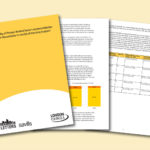London faces a possible homelessness spike in the coming months due to the cost-of-living crisis and increases in private rents, boroughs have warned.
The cross-party group London Councils highlights new analysis showing that fewer than one in ten properties listed for private rent in the capital are affordable to Londoners who depend on welfare support for meeting their housing costs.
London Councils also estimates 125,000 low-income households in the capital are at heightened risk of homelessness because their benefit entitlement now falls short of meeting their rent.
Amid fears that skyrocketing inflation and energy bills will drive worsening cost-of-living pressures in the coming months, boroughs are urging the Government to increase Local Housing Allowance (LHA) rates to cover at least 30% of local market rents.
Households who are eligible for LHA receive it as part of their housing benefit or Universal Credit payment to cover their housing costs if they have a private landlord. Just over 423,000 Londoners receive LHA.
The research into affordability in London’s private rented sector for households receiving LHA was undertaken by Savills after being commissioned by Capital Letters, a not-for-profit company launched by the London boroughs to secure private rented accommodation for homeless households.
Key findings from the research include:
- Average rents are now higher than their pre-pandemic levels in all London boroughs. London rents have increased by an average of 15.8% over the year to June 2022 (source: Savills using Rightmove).
- Part of the reason for rents increasing during 2021 and early 2022 has been the significant fall in supply. The number of properties listed to rent across London in the first quarter of 2022 was 35% lower than the pre-Covid quarterly average.
- This has had a double impact on the number of properties affordable at LHA rates. The fall in supply combined with increasing rents means the overall size of the rental market is decreasing, as is the proportion of the market which is affordable.
- In 2021/22 only 8.8% (18,072 out of 206,067) of all properties listed for rent in London were affordable on LHA. This has reduced from 12.9% in 2020/21. In central London just 1.3% of properties were affordable in 2021/22.
- The picture is even more stark for London households impacted by the overall Benefit Cap. Only 0.8% of properties were found within budget for a capped single parent household with two children over four years old.
Analysis of government data by London Councils has identified around 125,000 low-income London households at particular risk of homelessness because their benefit entitlements fall short of covering their rent. Many more thousands of households who are already classed as homeless are effectively trapped in temporary accommodation because restricted LHA rates make it impossible to find secure and affordable accommodation in the private rented sector.
The chronic shortage of social housing in the capital means many low-income Londoners rely on privately rented accommodation. However, the government introduced a four-year freeze on LHA rates from 2016, which severely restricted the pool of properties affordable to those who use it to pay their rent.
In response to the Covid-19 pandemic, the Government increased LHA to cover 30% of local market rates from April 2020. This represented a major uplift in affordability and was a key factor in avoiding a homelessness spike at the height of the pandemic. The Government’s decision to freeze LHA at the April 2020 rates, even though rents have since increased significantly, means affordability is again massively squeezed.
Boroughs believe restoring LHA to 30% of current market rates would help prevent homelessness for thousands of Londoners, while reducing the wider costs to the public sector that homelessness creates.
Cllr Darren Rodwell, London Councils’ Executive Member for Regeneration, Housing & Planning, commented: “The combination of rising rents and the worsening cost-of-living crisis means many tens of thousands of Londoners are at real risk of homelessness in the coming months.
“Just as the government boosted LHA to help households avoid homelessness during the pandemic, it’s vital that LHA is restored once again to cover at least 30% of market rents. Increasing LHA would bring much-needed relief to Londoners struggling with housing costs.
“Without urgent action, we’re worried we’ll see growing numbers of low-income households unable to afford their rent and becoming homeless. The consequence for those Londoners could be devastating. We’re keen to work with ministers on this important issue, as tackling homelessness is a priority for us all.”
Sue Coulson, Chief Executive of Capital Letters, said: “London has a growing homelessness crisis. Demand is outstripping supply, with hundreds of applications for each rental property. Supply is diminishing as some landlords are exiting the market, and those remaining are charging higher rents. Both actions mean the pool of affordable housing has contracted at an alarming rate, and exponentially since January 2022. As a result, our member boroughs are finding it much harder to avoid putting families in expensive temporary accommodation.
“The positive impact of the increase of LHA rates in March 2020 was very visible. This narrowed the gap between LHA rent and market rent properties and made them affordable while also attractive to landlords. In order to avert a deepening crisis, based on the evidence presented from the research, similar action must be taken now.”
Abigail Davies, Director, Savills housing consultancy team, said: “This analysis highlights the importance of maintaining a strong link between housing support and the market in which households rent accommodation given the chronic shortage of social rented housing.
“Reviewing what’s happened over recent years shows that constraining the help available to pay rent results in hardship and, ultimately, the risk of homelessness. The experience of benefit-capped families in London is perhaps the most stark, with the prevailing caps making it almost impossible for them to access suitable accommodation.”
London already has the highest homelessness rates in the country. London Councils estimates that almost 150,000 homeless Londoners live in temporary accommodation arranged by their local borough — including 75,850 children.
London accounts for two-thirds of England’s homelessness total and boroughs spend £1bn every year on homelessness services, the majority of which goes towards temporary accommodation costs.
London Councils will seek to work with ministers in addressing this challenge. Top priorities include improving the welfare system’s ability to help low-income households meet their housing costs but also increasing funding to tackle London’s chronic shortage of social housing.









